The first ingredient which we tell the story from the circular economy perspective is the citrus fruit.
Today in this post we start to explore the story of the circular economy [1] and in each chapter we will explain how Favini is a part of this ethical chain which takes used natural products from the agri- industrial sector and transforms them in an environmentally sustainable way into a valuable new product. This in turn may be easily recycled numerous times retaining value through a circular chain.
Each month we will examine the stories of Crush – the eco sustainable paper by Favini born from the agro-industrial residues – and the life cycle of the by-products that are used to produce it by its upcycling process.
In Italy one million tonnes of citrus fruit are used each year to make juice. In reality, only 40% volume of product is used to become juice, whilst the remaining 60%, equal to 600,000 tons, where does this end up?
Let’s find out together through the citrus fruit life cycle the Crush Story from orange orchards to Crush Citrus paper, through the many processes and uses of its by-products.
Crush Citrus Story: a circular economy story from orange orchard to paper
Citrus fruits are harvested from the orchards for the production of juice, but only 40% this volume, becomes juice after the squeezing process.
The remaining 60%, equal to 600,000 tonnes, becomes a by-product and ends up as “citrus mash”.
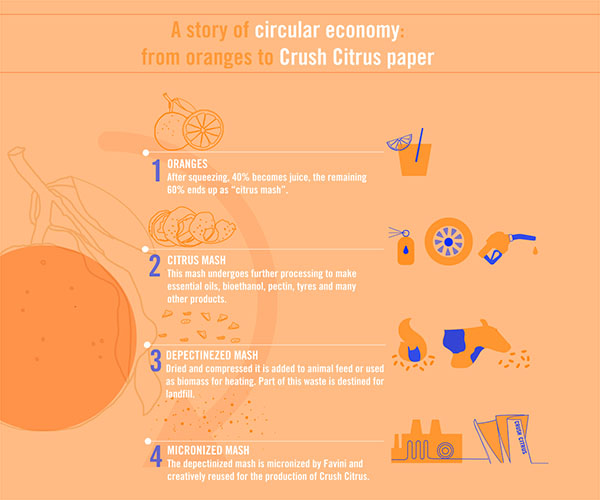
This mash undergoes further processing to make essential oils, bioethanol, pectin, candied fruit, tyres and many other products.
The waste products remaining after these processes is known as “depectinized mash”. In general, this waste is dried, compressed then added to animal feed or used as biomass for heating. Part of this waste is destined for landfill.
At this point Favini intervenes using the ‘depectinized mash’, salvaged as a material of little interest and value. It is then creatively reused for the first time as a prime raw material for the production of high quality ecological papers
From a circular economy perspective, Favini intervenes to creatively reuse the ‘depectinized mash’ of oranges for the production of high quality ecological papers.
Crush Citrus is the eco paper by Favini produced from citrus by-products.
Crush Citrus was born and is the first paper made with by-products taken from the agro-industrial processing of oranges and is used to substitute up to 15% of tree cellulose.
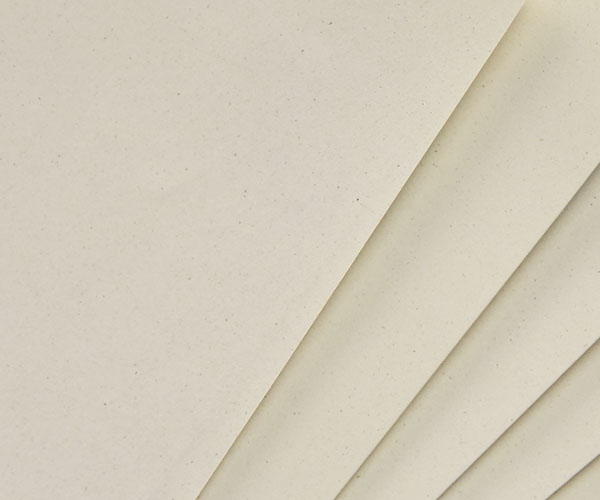
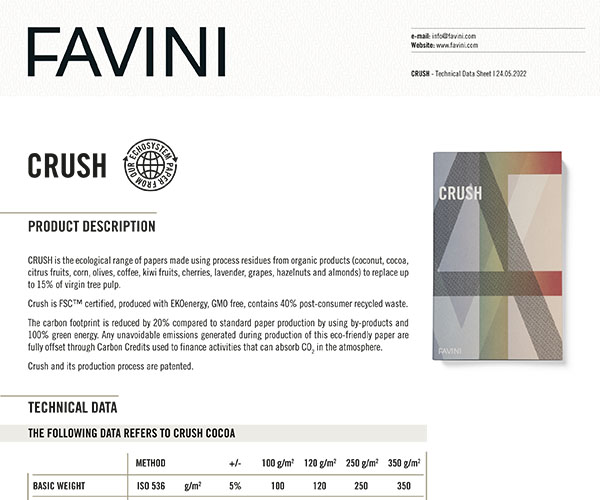
In addition to the by-products of citrus, we also use the process residue from grape, cherry, lavender, corn, olives, coffee, kiwis, hazelnuts and almonds.
Crush Story Citrus continues: the onward chain
The chain does not end with Crush, in fact the Favini paper created by re-using by-products of the agro-industrial processing is a recyclable material. Crush, after its use, is easily recycled to continue its life in successive production cycles in accordance with a circular model.
Crush is suitable for all applications, including luxury packaging, brochures, stationery tags, notebooks, cards and labels.
Cosmetics brand Anne Geddes has chosen Crush for the packaging of its products.
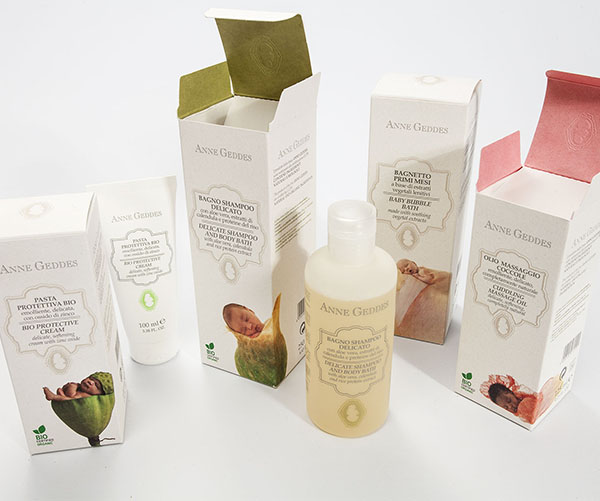
The Crush visual book “X-Ray”, with its technical and creative functions, allows us to explore the potential of this paper through incredible X-ray images by the British photographer Nick Veasey. Find out more in the article “X-rays”: exploring inner beauty.
To be inspired by Crush in producing your own creative projects see Crush’s Pinterest board.
Have you used our ecological Crush paper and would you like to share the result on our social media? Write to social@favini.com with your piece of circular economy history.
Other alternative uses of the orange by-products
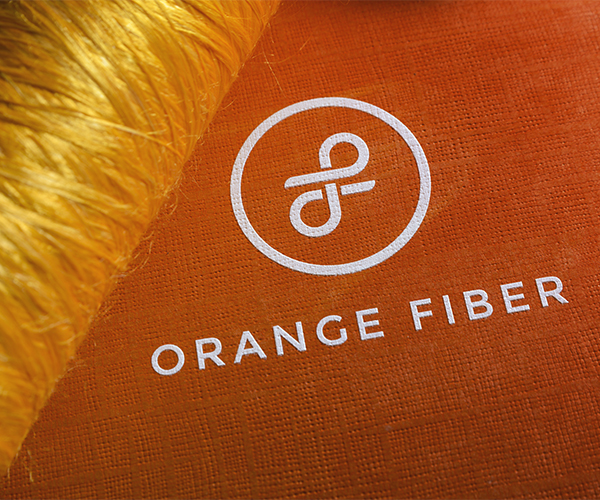
Like Favini, Orange Fiber, also from a circular economy perspective, transforms the agro-industrial residues of oranges: this Sicilian start-up creates a sustainable fabric using food residues from citrus processing, preserving this natural resource and encouraging the reuse of industrial by-products.
Continue to follow the Crush Story:
- From bean to Crush Coffee
- From cherry tree to Crush Cherry paper
- From flower to Crush Lavender
- From corn crop to Crush paper
- From vineyard to Crush Grape
- From nut kernels into Crush paper
- From field to Crush Barley
- From kiwi fruit to the ecological paper Crush
- From olive grove to the ecological paper Crush
- From the bean to Crush Cocoa
- From coconut to paper
[1] Ellen Macarthur Foundation “What is a circular economy?”


